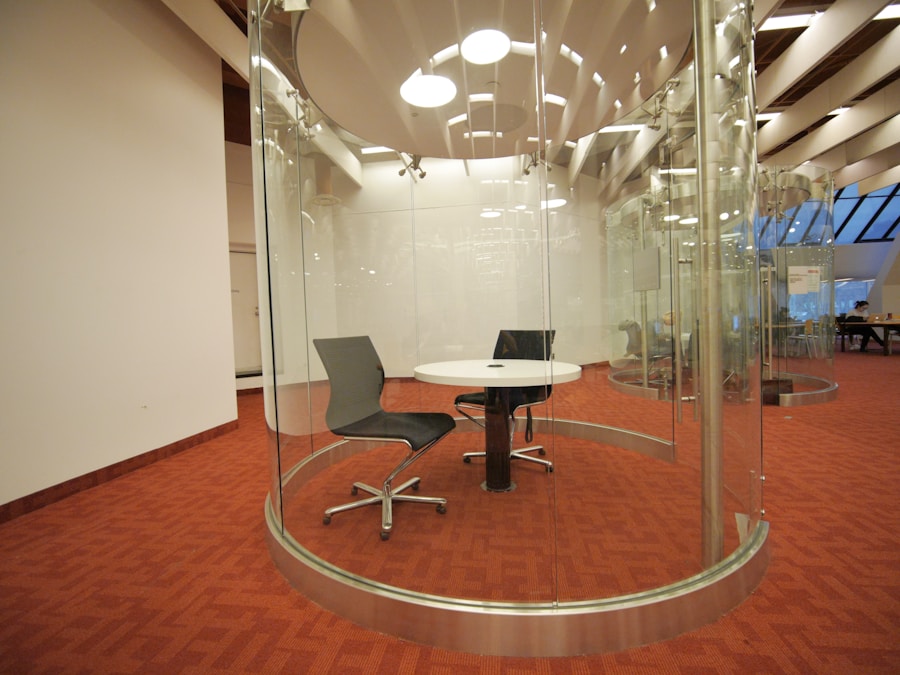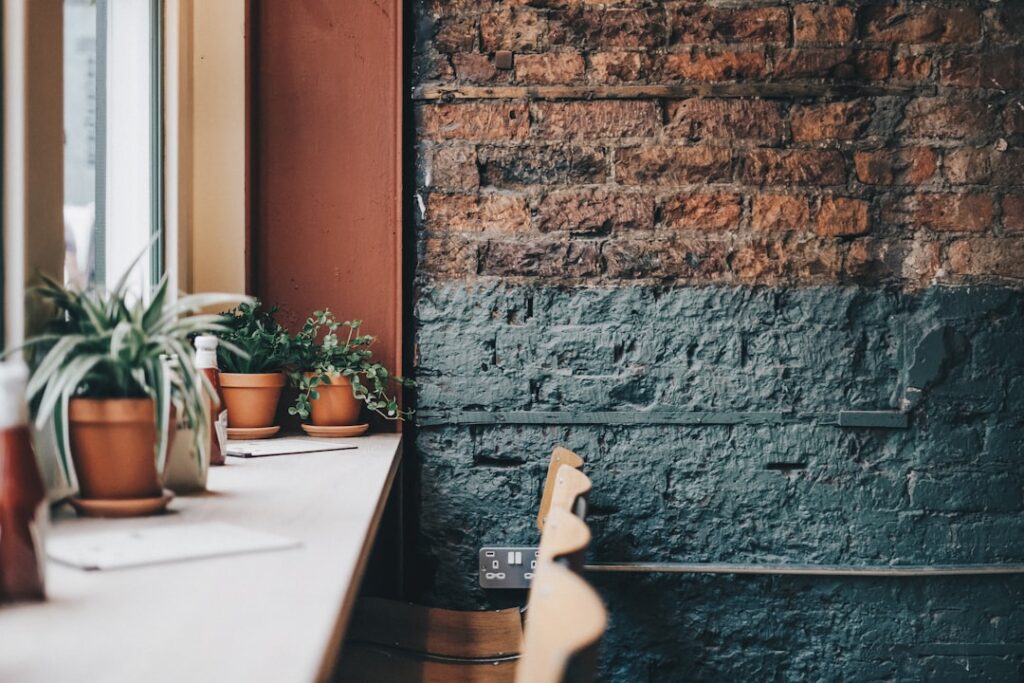The significance of office interiors extends far beyond mere aesthetics; they play a crucial role in shaping the overall work environment and influencing employee productivity. A well-designed office can enhance employee morale, foster collaboration, and create a sense of belonging among team members. When employees feel comfortable and inspired in their workspace, they are more likely to be engaged and motivated, leading to increased efficiency and creativity.
The layout, color schemes, and furnishings all contribute to the atmosphere of the office, making it essential for businesses to invest in thoughtful interior design. Moreover, the design of an office can also impact how clients and visitors perceive a company. A professional and inviting office space can leave a lasting impression, signaling to clients that the organization values quality and attention to detail.
This is particularly important in competitive industries where first impressions can significantly influence business relationships. Therefore, the importance of office interiors cannot be overstated; they are a reflection of a company’s culture and values, serving as a physical manifestation of its brand identity.
Key Takeaways
- Office interiors play a crucial role in employee productivity, well-being, and overall company image.
- Current trends in office interior design include flexible workspaces, biophilic design, and sustainable materials.
- Finding the right interior designer in Dubai involves researching their portfolio, client reviews, and understanding their design approach.
- Creating a functional workspace requires careful planning, ergonomic furniture, and efficient layout design.
- Incorporating branding into office interiors can be achieved through color schemes, logo placement, and themed decor elements.
- Maximizing natural light and greenery in the office can improve mood, reduce stress, and enhance air quality.
- Choosing the right furniture and decor involves considering comfort, style, and functionality to suit the company’s needs.
- Budgeting for office interior revamp should include costs for design fees, materials, labor, and any additional expenses for a successful transformation.
Trends in Office Interior Design
The Evolution of Office Design
Office interior design has undergone a significant transformation, driven by changes in work habits and technological innovations. A prominent trend in this shift is the adoption of open-plan layouts that foster collaboration and communication among employees. These spaces typically feature communal areas, such as lounges and breakout rooms, designed to facilitate informal interactions and brainstorming sessions.
### Encouraging Collaboration and Communication
The idea behind this design approach is to eliminate barriers between departments and create a more cohesive work environment allows ideas to flow freely. This, in turn, promotes a more productive and efficient workforce.
### Bringing the Outdoors In
Another significant trend in modern office design is the incorporation of biophilic design elements, which emphasize the connection between nature and the built environment. This approach involves the use of natural materials, indoor plants, and ample natural light to create a calming atmosphere that enhances well-being. Research has shown that exposure to nature can reduce stress levels and improve cognitive function, making biophilic design an appealing choice for modern offices.
### Technology Integration for a Smarter Workplace
Technology integration is becoming increasingly important in modern office design, with smart office solutions that allow for customizable lighting, temperature control, and even automated furniture arrangements to accommodate various work styles.
Finding the Right Interior Designer in Dubai

Selecting the right interior designer is a critical step in transforming an office space into a functional and aesthetically pleasing environment. In Dubai, where the market is saturated with design professionals, it is essential to conduct thorough research to find a designer whose style aligns with the company’s vision. One effective approach is to review portfolios and case studies of previous projects to gauge the designer’s expertise and creativity.
This not only provides insight into their design philosophy but also helps identify whether they have experience working on similar projects. Networking within industry circles can also yield valuable recommendations for reputable interior designers. Engaging with local business associations or attending design expos can facilitate connections with professionals who have a proven track record in office design.
Once potential designers have been identified, it is crucial to conduct interviews to discuss project goals, timelines, and budgets. This dialogue will help ensure that both parties are aligned on expectations and can lead to a successful collaboration that results in an inspiring office space.
Creating a Functional Workspace
Creating a functional workspace requires careful consideration of how employees interact with their environment on a daily basis. The layout should be designed to accommodate various work styles, from collaborative team projects to focused individual tasks. Zoning the office into distinct areas—such as quiet zones for concentration, collaborative spaces for teamwork, and social areas for relaxation—can enhance productivity by allowing employees to choose the environment that best suits their current needs.
In addition to spatial considerations, incorporating technology into the workspace is vital for functionality. This includes ensuring that there are sufficient power outlets for devices, high-speed internet access throughout the office, and advanced audiovisual equipment for meetings. Ergonomic furniture is another essential element; desks and chairs should be adjustable to promote comfort and reduce the risk of injury.
By prioritizing functionality in the design process, businesses can create an office that not only looks good but also supports employees in performing at their best.
Incorporating Branding into Office Interiors
Integrating branding into office interiors is an effective way to reinforce a company’s identity and values within the workspace. This can be achieved through various design elements such as color schemes, artwork, and signage that reflect the brand’s personality. For instance, a tech startup might opt for vibrant colors and modern furnishings to convey innovation and creativity, while a law firm may choose a more subdued palette with classic furniture to project professionalism and trustworthiness.
Additionally, incorporating brand messaging into the design can serve as a constant reminder of the company’s mission and values for both employees and visitors. Wall graphics featuring inspirational quotes or visual representations of company achievements can create an engaging atmosphere that aligns with the brand’s narrative. By thoughtfully embedding branding into the office design, businesses can cultivate a cohesive environment that resonates with their corporate ethos.
Maximizing Natural Light and Greenery

The Importance of Natural Light in Office Spaces
Natural light has a profound impact on our mood, well-being, and productivity. By strategically placing windows and glass partitions, office layouts can maximize natural light, creating a more inviting atmosphere and reducing the need for artificial lighting. Open-plan designs often benefit from this approach, as they can foster a sense of community.
The Benefits of Greenery in the Office
Incorporating plants into the office environment can further enhance the benefits of natural light. Not only do they improve air quality, they also create a calming ambiance that can reduce stress levels among employees. Options such as vertical gardens or strategically placed potted plants can add visual interest while promoting a connection to nature.
Creating an Uplifting Workspace
The combination of natural light and greenery creates an uplifting workspace that encourages creativity and collaboration among team members. By incorporating these elements, offices can create a space that promotes well-being, productivity, and overall job satisfaction.
Choosing the Right Furniture and Decor
Selecting appropriate furniture and decor is pivotal in achieving both functionality and aesthetic appeal in an office space. The choice of furniture should prioritize ergonomics while also reflecting the company’s brand identity. For example, adjustable desks can cater to different working styles by allowing employees to alternate between sitting and standing throughout the day.
Comfortable seating options in collaborative areas encourage informal meetings and brainstorming sessions. Decor elements such as artwork, color schemes, and accessories should complement the overall design theme while adding personality to the space. Local artists’ works can be featured to support community engagement while providing unique visual interest.
Additionally, incorporating elements like writable walls or interactive displays can foster creativity and collaboration among employees. The right combination of furniture and decor not only enhances the functionality of the workspace but also creates an inviting atmosphere that reflects the company’s culture.
Budgeting for Office Interior Revamp
Budgeting for an office interior revamp requires careful planning and consideration of various factors that influence costs. It is essential to establish a clear budget from the outset, taking into account not only design fees but also expenses related to construction, furniture procurement, technology integration, and decor elements. Engaging with an interior designer early in the process can help provide realistic estimates based on desired outcomes.
Prioritizing expenditures is crucial; businesses should identify which aspects of the revamp are most important for achieving their goals. For instance, investing in high-quality ergonomic furniture may yield long-term benefits in employee health and productivity, while opting for cost-effective decor solutions could help balance the budget. Additionally, exploring options such as phased renovations can spread costs over time while minimizing disruption to daily operations.
By approaching budgeting strategically, companies can achieve a successful office interior transformation that aligns with their vision without compromising financial stability.
When it comes to creating stunning office interiors in Dubai, it is essential to work with a reputable design company like Office Interior Design Company. Their expertise in creating functional and aesthetically pleasing workspaces is unmatched. In addition, they prioritize ergonomics and employee well-being, as discussed in their article on height-adjustable desks and ergonomics. This attention to detail ensures that every aspect of the office design contributes to a productive and comfortable work environment. To learn more about their approach and values, visit their About page.
FAQs
What are office interiors?
Office interiors refer to the design and layout of the interior spaces within an office environment. This includes the arrangement of furniture, lighting, color schemes, and overall aesthetic of the workspace.
Why are office interiors important?
Office interiors play a crucial role in creating a productive and comfortable work environment. Well-designed office interiors can enhance employee morale, productivity, and overall well-being. They also contribute to creating a positive impression on clients and visitors.
What are the key elements of office interiors?
Key elements of office interiors include ergonomic furniture, efficient use of space, proper lighting, sound control, and incorporation of branding elements. Additionally, factors such as air quality, temperature control, and access to natural light are also important considerations.
How can office interiors be customized for a specific company or industry?
Office interiors can be customized to reflect the unique culture, values, and branding of a company. This can be achieved through the use of specific color schemes, artwork, and furniture that align with the company’s identity. Additionally, different industries may have specific functional requirements that can be incorporated into the design.
What are the current trends in office interiors in Dubai?
Current trends in office interiors in Dubai include the use of sustainable and eco-friendly materials, flexible and collaborative workspaces, incorporation of technology, and biophilic design elements that bring nature into the office environment. Additionally, there is a growing emphasis on creating wellness-focused spaces that prioritize the health and well-being of employees.


